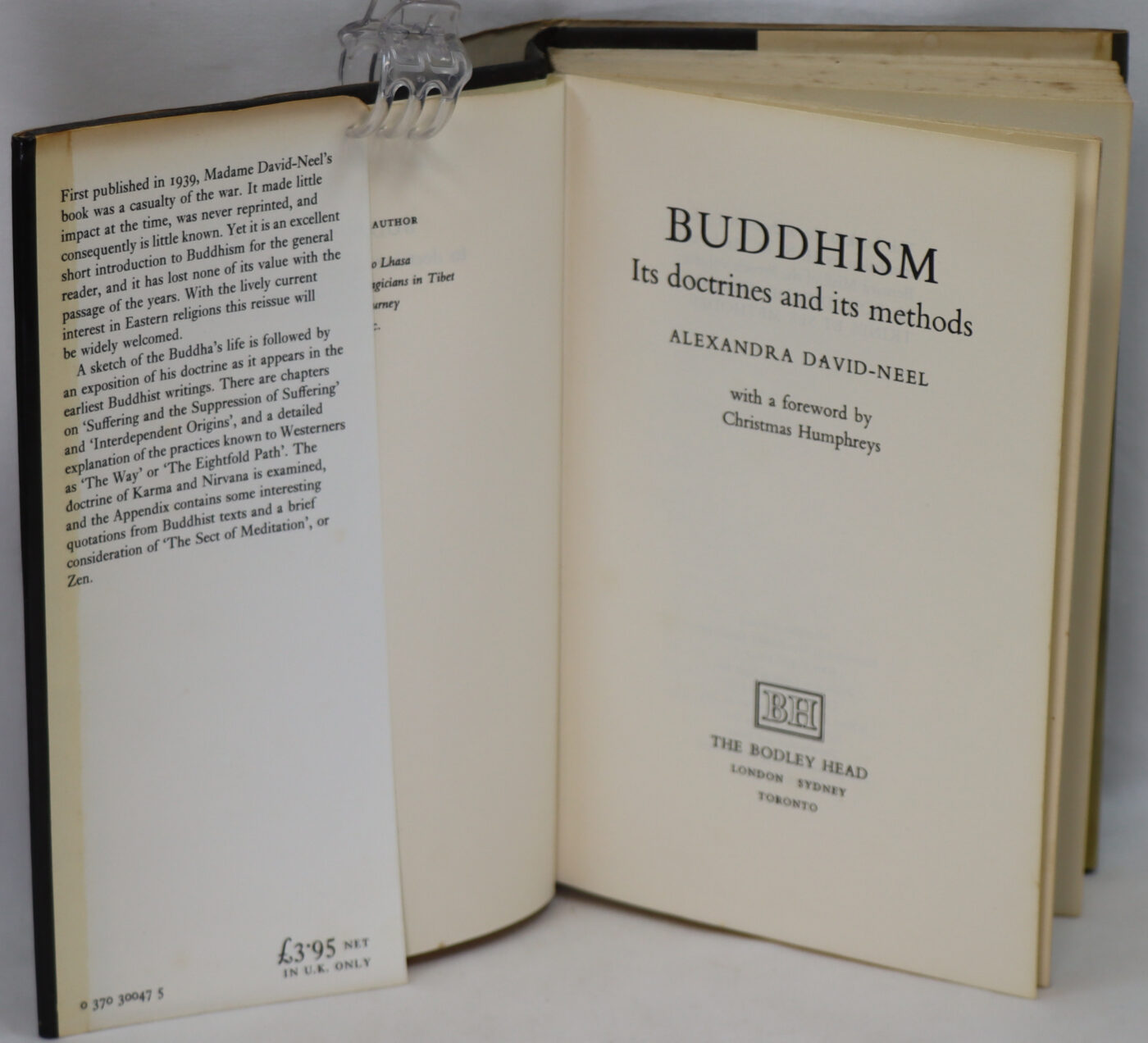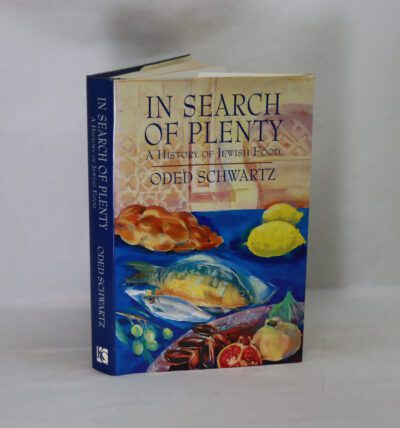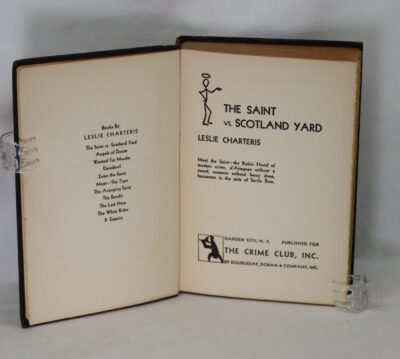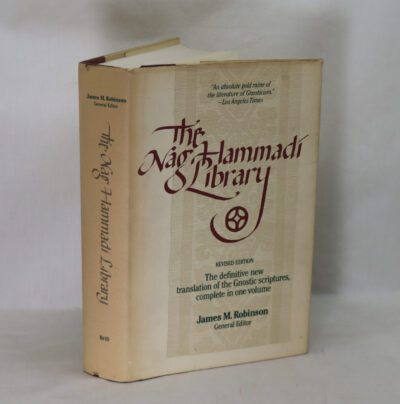Buddhism. It's Doctrines & It's Methods.
By Alexandra David-Neel
ISBN: 9788177698923
Printed: 1977
Publisher: The Bodley Head. London
| Dimensions | 14 × 21 × 3 cm |
|---|---|
| Language |
Language: English
Size (cminches): 14 x 21 x 3
Condition: Good (See explanation of ratings)
Item information
Description
In the original dust jacket. Black cloth binding with gilt title on the spine.
We provide an in-depth photographic presentation of this item to stimulate your feeling and touch. More traditional book descriptions are immediately available
-
Note: This book carries a £5.00 discount to those that subscribe to the F.B.A. mailing list
Please view the photographs: a nice clean book.
Alexandra David-Neel was a fascinating woman, daring to travel in disguise through the Far East, going through traditional Buddhist lands, including the sacred city of Lhasa, before other Westerners (much less women!) were permitted such license. The daughter of an exiled Parisian, she spent years travelling and living in Buddhist monasteries before returning to Paris and becoming a celebrity. Her fame spread both through her writings and her exploits, well-reported and toasted in society. She died at the age of 100, in 1969.
David-Neel’s writing helped inspire the nascent interest in Buddhism throughout Europe of the late nineteenth and early twentieth centuries. Never one to find herself confined to the academy, her writing does not suffer from the typical formulaic writing that much of religious studies scholarship possesses. Her work is clear and accessible, almost chatty at times, as befits a woman who lived the practices and beliefs of which she writes, rather than merely studying.
Buddhism has made significant in-roads into the Western psyche since Mme. David-Neel’s first writings; many of the principles and beliefs she covers here are covered in greater detail elsewhere. However, David-Neel provides a wonderful introduction to Buddhism, particularly for those who have little or no background in the subject. She looks at the legendary life of the Buddha, recounting the tales in lively form. She looks at the basis of the teaching of the Buddha and the general principles of belief derived from them, most notably the issues of suffering and elimination of suffering, the Eight-fold path, and the ideas of karma (karman, David-Neel uses, a more neutral term linguistically) and nirvana.
The idea of confusion of philosophy and religion starts on the very first page of David-Neel’s introduction – Buddhism lacks many of the ‘classic’ hallmarks of religion (lack of a deity is but one); David-Neel opts in this work not to go into the more arcane arguments of philosophy versus theology versus religion, but rather explains the experiential and practical side of Buddhism, whose adherents are rarely concerned about this distinction other than as an intellectual exercise.
David-Neel concentrates primarily on the oldest form of Buddhism, Therevada Buddhism, drawing in Tibetan and Mahayana Buddhism at different points; like the denominational divisions in Christianity, there is still a common core, and these commonalities form the majority of the narrative.
The appendices have translations of pieces of Buddhist writings and scripture, including rules for moral living, meditation and various other pieces of interest. Some are sayings, some are poetry, and some are in dialogue form, showing the diversity of writing forms.
I have a special place in my heart for this book, for it was the first religious-studies book I ever read, decades ago. I return to it regularly and recommend it frequently; while it is neither comprehensive nor exhaustive in its study, it provides a fresh and unique insight into Buddhism rarely captured in more academic texts.
Want to know more about this item?

Related products
Share this Page with a friend











